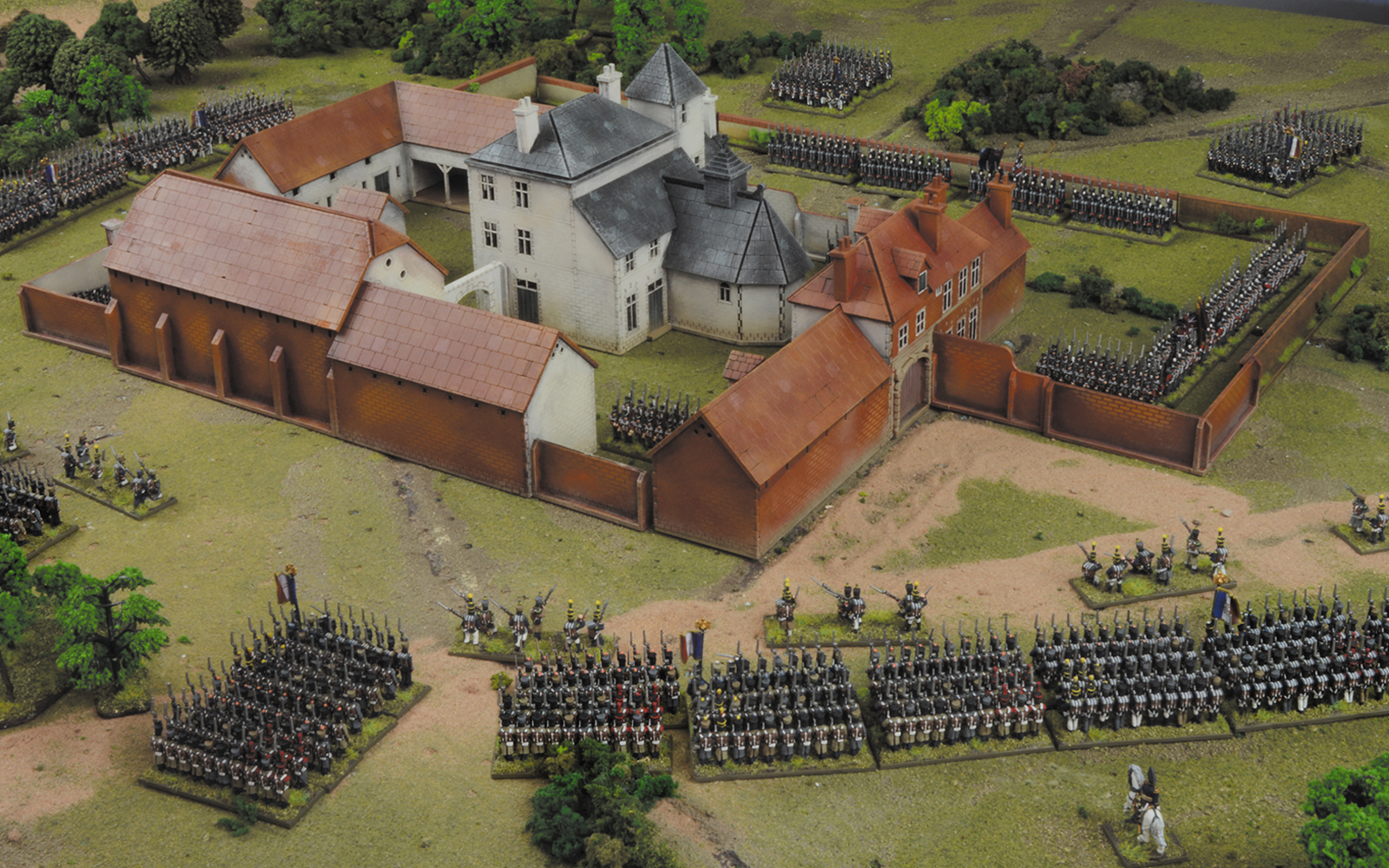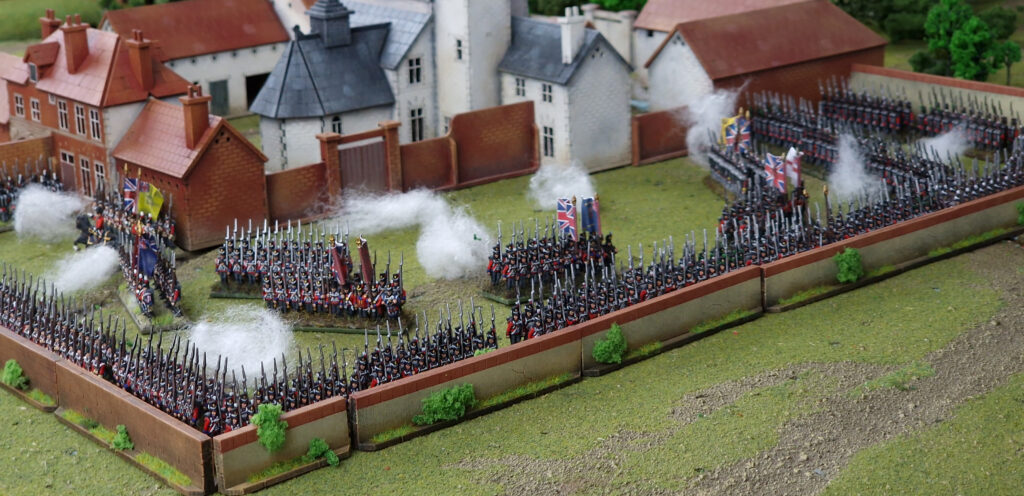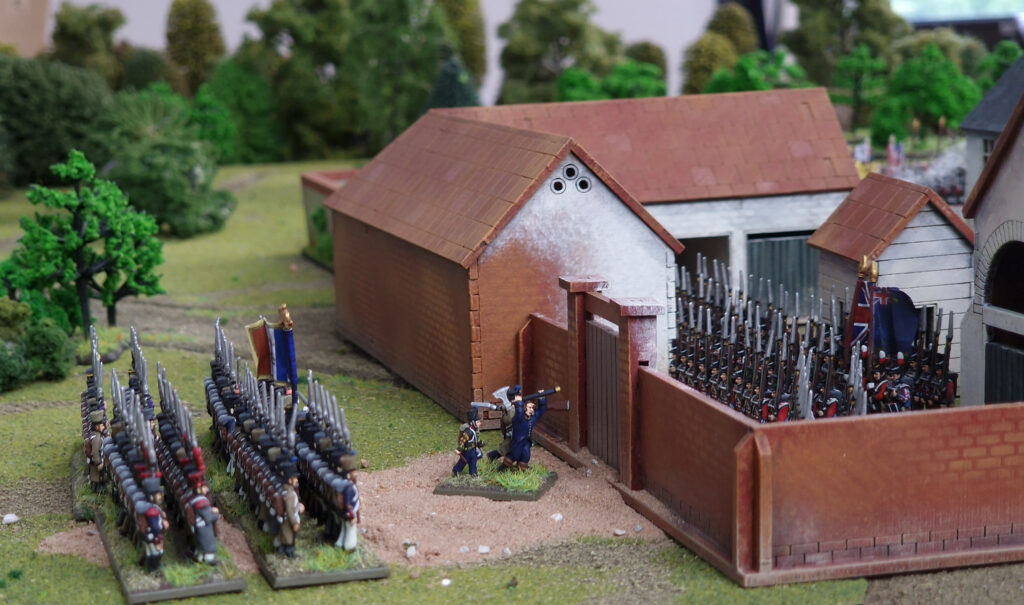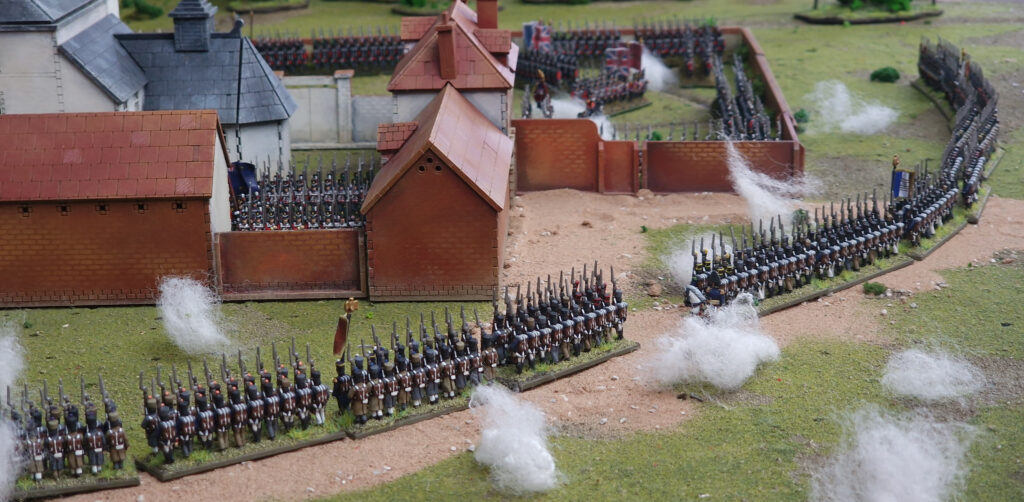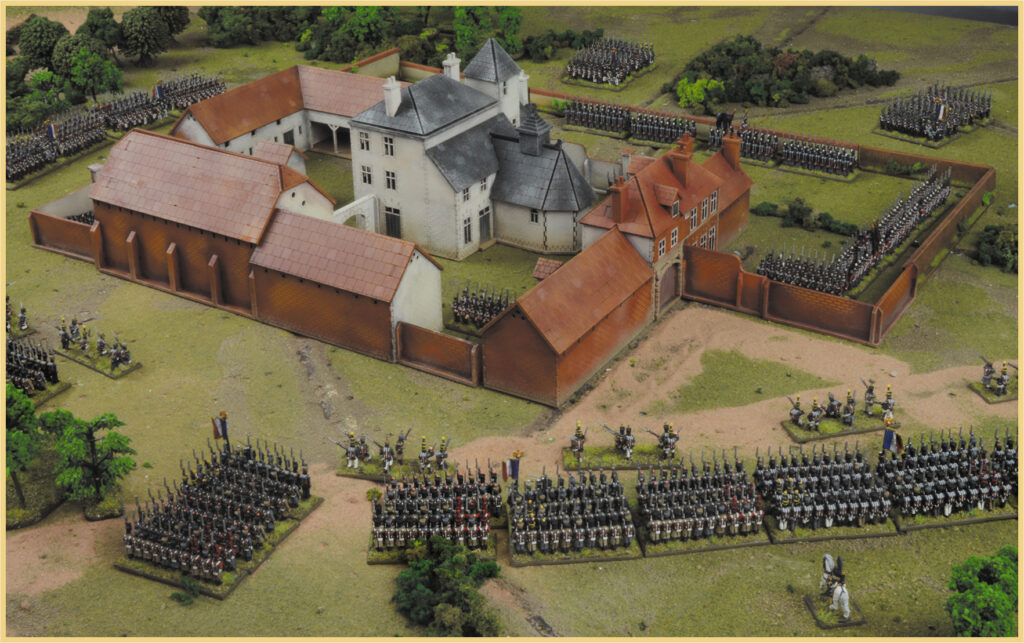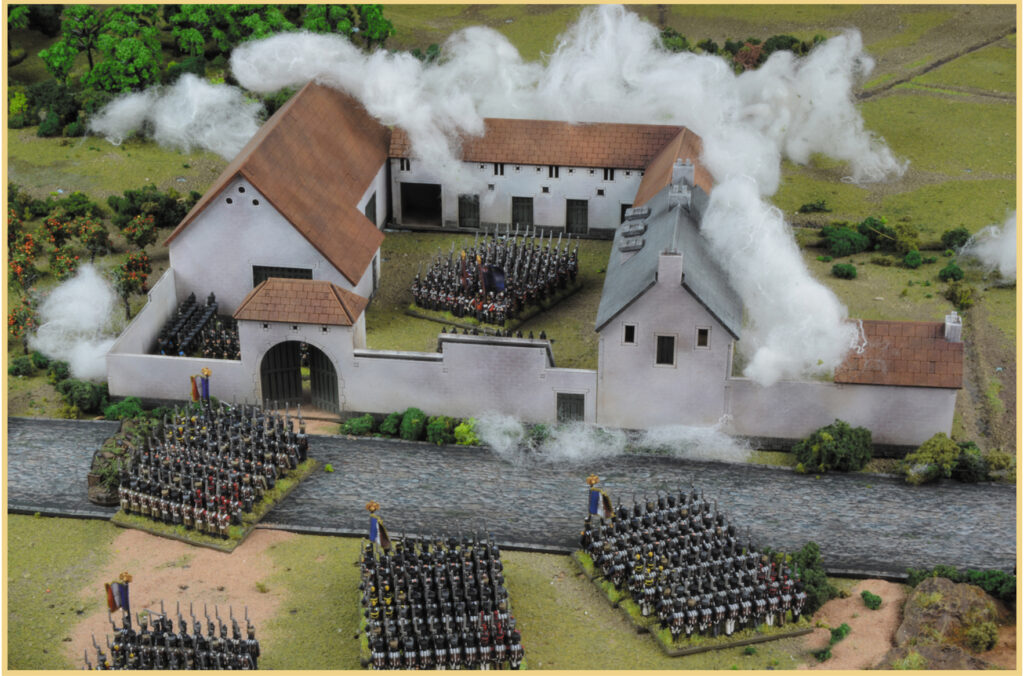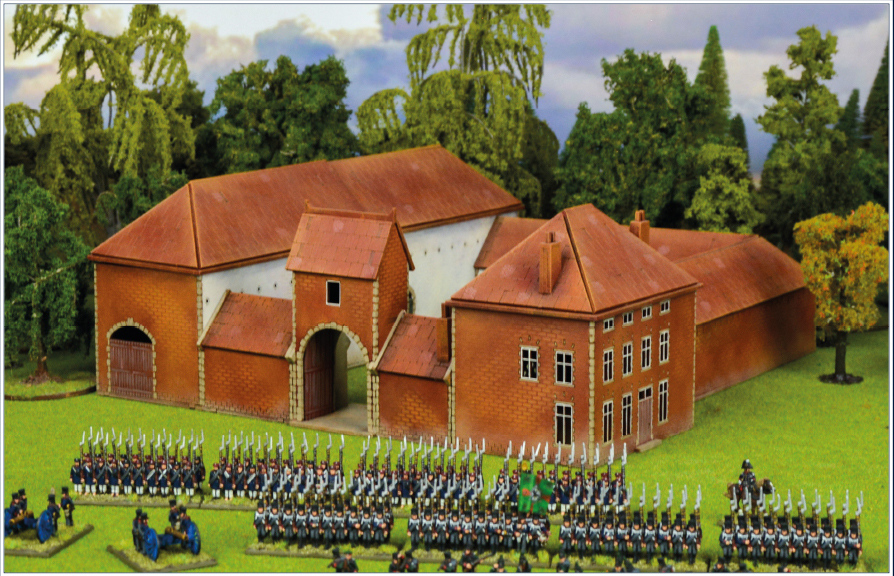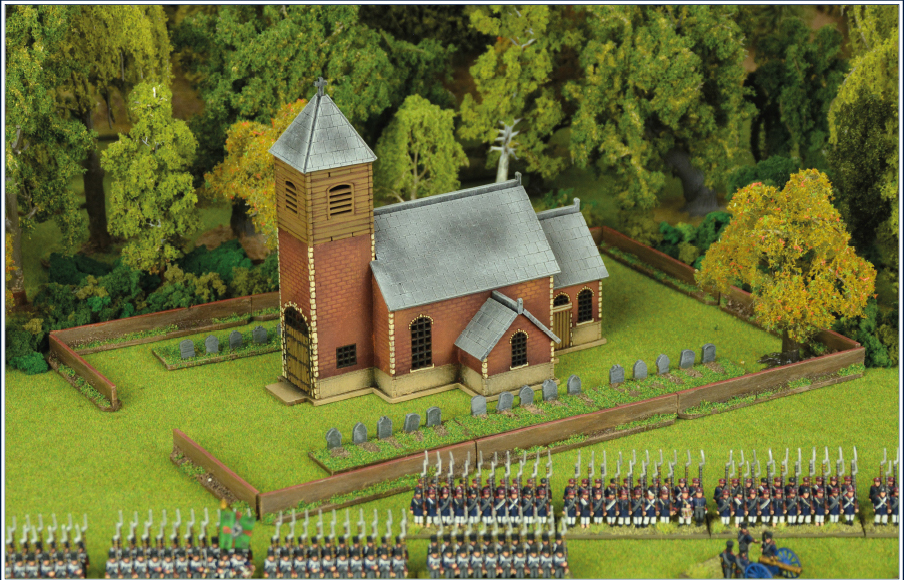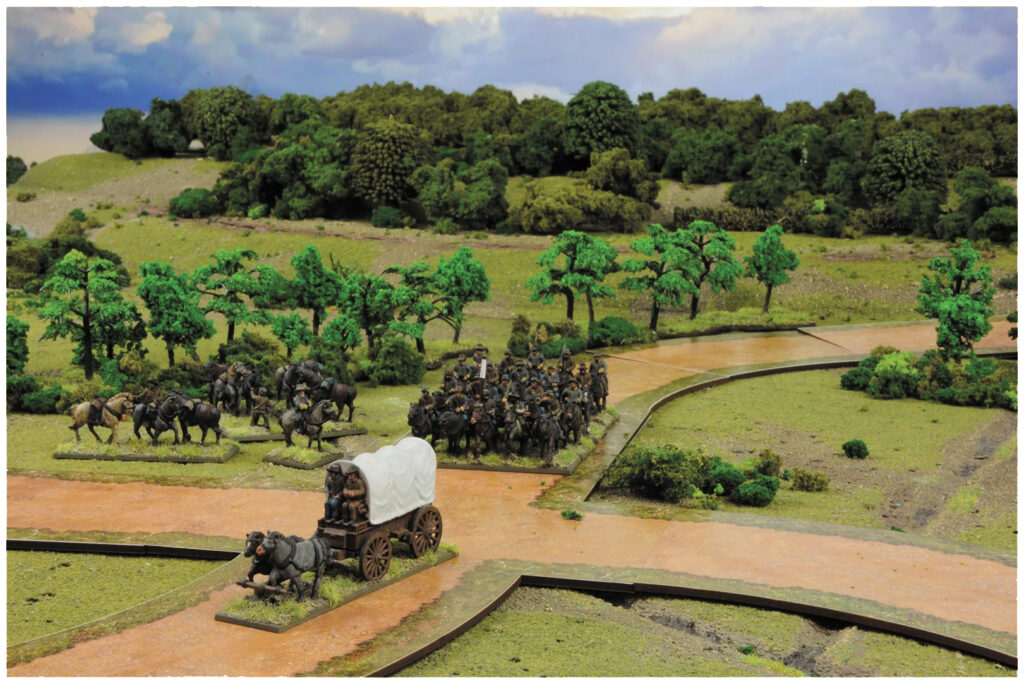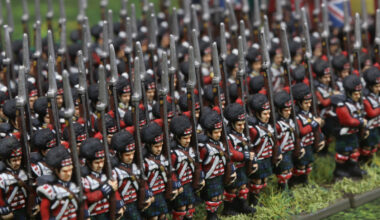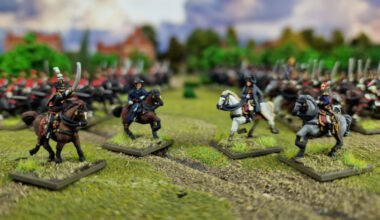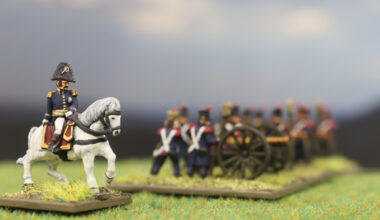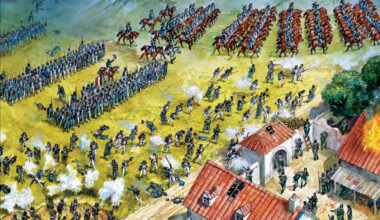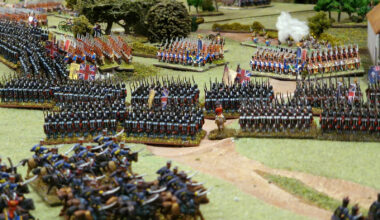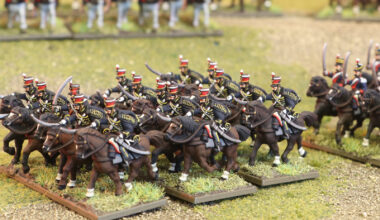As the Epic Battles: Waterloo range was being developed, we knew that it would be absolutely crucial to get the important buildings right. Our friends at Sarissa have done such a good job that we thought it would be criminal to not highlight the vital walled farmhouses that anchored Wellington’s line that day in June 1815. While La Haye Sainte is perhaps more famous as the lynchpin of the British left, on the right we find Hougoumont, in its own right a fantastic piece of history, and the site of some of the most savage fighting of the entire battle.
Originally built sometime between 1474 when the land surrounding was purchased and 1536 when a bill of sale to one Pierre du Fief records a building thereon, the buildings and estate were enlarged substantially until around 1637, when the present chateau was constructed. The sandstone and brick estate comprised the chateau proper, as well as stables, a barn and other farm buildings, and a small chapel, all surrounded by high walls. There was also a wonderful French-style formal garden, which predictably did not survive the battle!
Heavily damaged by the fighting that raged around and throughout its walls, Hougoumont was sold a number of times in the following years, remaining an active farm until the end of the 21st Century. By 2006, however, it had fallen into disrepair and was badly in need of restoration. Fortunately, it was extensively repaired and reopened as a museum in time for the 200th anniversary of the Battle of Waterloo in 2015, and can still be visited today.
The Battle
For the Battle of Waterloo, Hougoumont was the right-hand bulwark of the British forces. As it was a not-inconsiderable distance in front of the main Allied line it was one of the first areas of the larger battle to see fighting. It was defended primarily by the 1st Battalion of the 2nd Nassau, reinforced by Hanoverian Jäegers and Landwehr. Alongside them was a detachment of elite troops comprising the light companies of the 2nd Battalion, Coldstream Guards, the 2nd and 3rd Battalions, 1st Guards, and the 2nd Battalion, 3rd Guards. In overall command was Lieutenant-Colonel James Macdonnell of the Coldstream Guards, who positioned his forces both within the chateau walls and in the orchard and parks of the immediate surrounds.
Such was the importance of Hougoumont that Napoleon would eventually send around 14,000 troops to secure it. Wellington meanwhile used almost 12,000 to keep the supply lines to the farm open, allowing for reinforcements and ammunition to be brought up throughout the day. By that evening, the chateau would be a burning ruin, choked with corpses, but still firmly in Allied hands, thanks to the heroics of its defenders and the sturdy construction of its walls.
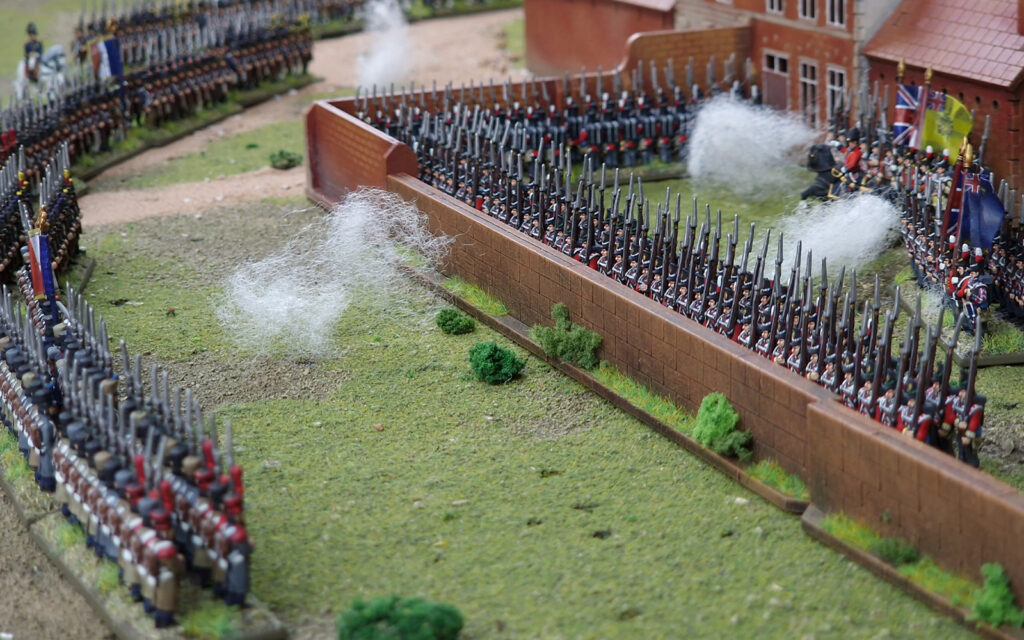
Beginning in the late morning, several major infantry assaults were launched by the French against Hougoumont, driving the defenders back within its walls and forcing the British to protect the sunken road to the north to allow for supplies to be ferried through. A small breach was made on the southern wall, but could not be exploited, before the action which catapulted an obscure farm in Belgium to immortality.
The North Gate
French troops from the 1st Legere were able to breach the north gate. Leading them was Sous-Lieutenant Legros, reportedly a huge man wielding a gigantic pioneer’s axe, who chopped through the gate and allowed his men to flood in. For a moment, it seemed as though the French would be able to take the courtyard by storm, until a heroic countercharge was made by the defenders. A small group of officers and men, led by Lieutenant-Colonel Macdonnell, pressed forward and in an instant of desperate effort were able to close and re-bar the gate. Corporal James Graham of the Coldstream Guards was recorded as being the man to actually drop the bar into place, for which he was subsequently declared by Wellington to be the “bravest man in the British Army”. This effort left Legros and around thirty of his men trapped inside the courtyard with the vengeful defenders. With no quarter asked or given, the only survivor of the French invaders was a young drummer boy, spared by the Guardsmen in a moment of commendable mercy.
As the fighting raged throughout the day, Napoleon ordered his artillery to shell Hougoumont’s defenders into submission, reducing all but the chapel to smoking rubble. Recognising the importance of the position, Wellington sent a note to Macdonnell, ordering him to hold his position, no matter the cost – orders that Macdonnell took to heart and executed. With the arrival of the Prussians and the Allied victory, the French withdrew having failed to seize the vital farm from the small but determined force of defenders. Wellington would afterwards declare that “the success of the battle turned upon the closing of the gates at Hougoumont” – and he should know!
On the Table
On the Black Powder Epic Battles: Waterloo table, the MDF kit makes for an imposing centrepiece for any board. Large enough to hold plenty of unit bases and fantastically detailed, it’s a must-have for anyone wanting to recreate this pivotal point in the Battle of Waterloo, as well as providing an interesting painting and modelling opportunity. For those wargamers who prefer their battles to be truly epic, pair it with the equally great La Haye Sainte kit to bookend the perfect miniature recreation of Wellington’s finest hour. It can even do excellent ‘stand-in’ duty for many other Northern European walled farmhouses, making it ideal for the ‘what-if’ battles that we all love!
Will you stand with Macdonnell and the Guards, or will you follow Legros through the gate to glory? Command is yours – only you can decide the fate of Europe!
Wider Waterloo
Hougoumont is just one of the key areas of arguably the most famous battlefield in military history represented in Black Powder Epic Battles: Waterloo.
